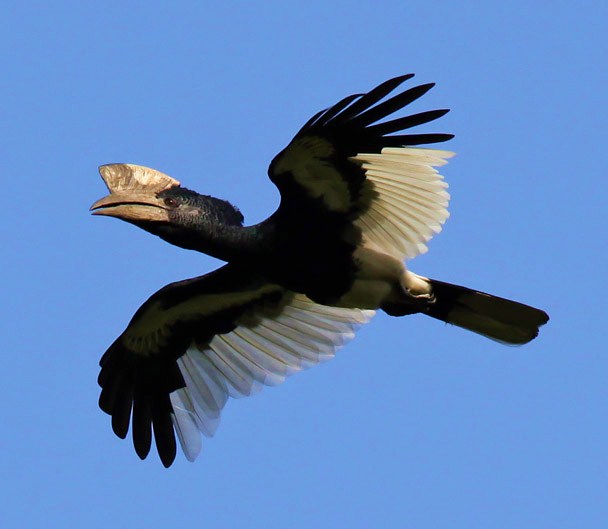Bycanistes subcylindricus

Common name:
Taxonomy:
Order Coraciiformes
Family Bucerotidae
Range:
These birds are found in throughout West and Central Africa. The subspecies Bycanistes s. subcylindricus ranges from Sierra Leone and north-east Liberia across the Ivory Coast to western Nigeria, while the subspecies, B. s. subquadratus, ranges from eastern Nigeria, Cameroon, and the Central African Republic to Sudan, Zaire, Uganda, south-west Kenya, and north-west Tanzania. An isolated population of B. s. subquadratus also exists in Angola.
Size:
This large hornbill is 60-70 cm long. Males tend to be larger than females, weighing 1.080-1.530 g, while females weigh between 1.000-1.250 g.
Habitat:
Black and white casqued hornbills are most commonly found in subtropical and tropical lowland and mountain forests, being also found in artificial landscapes such as plantations or urban areas, heavily degraded forests and dry savannas. They are present up to 2.600 m above sea level.
Diet:
These birds are mostly frugivorous, with the fruits of Ficus trees composing more than half of their diet. Overall, they are known to eat the fruits of over 41 plant genera, which they forage by hopping from branch to branch in the rainforest canopy and reaching for fruit with the tip of the bill, which they then swallow whole. They also consume birds, eggs, insects, bats, snails, lizards, molluscs, other small animal prey, mosses, lichens, and fungi.
Breeding:
They can breed throughout the year, but generally concentrate breeding during the local wet season of each part of their range. They nest in naturally formed cavities, 9-30 m high in large rainforest trees, and seal the cavity with mud pellets collected by the male. Inside, the female lays 2 white eggs, which she incubates alone for 42 days while the male delivers food to the female through a small slit, regurgitating numerous fruits, mammals, and insects. Usually only one offspring is reared, with the chick from the second-laid egg dying of starvation. The surviving chick fledges 70-79 days after hatching, but only becomes fully independent 7-10 weeks later.
Conservation:
IUCN status – LC (Least concern)
The global population size has not been quantified, but the species is reported to be locally uncommon to common over its very large breeding range. This species is able to survive in degraded forest and open areas, which allows it to survive large scale habitat degration occuring throughout its range. However, forest degradation in Africa means that hornbills now occur in more open areas with few large trees, which makes them more prone to hunting.








